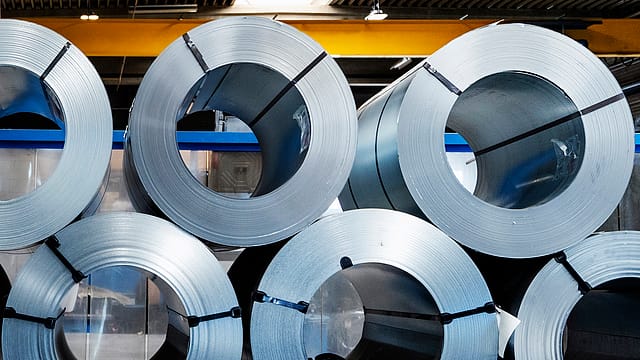Steel consumption may slow to 7-8% in FY25 after 3 years of double-digit growth
ADVERTISEMENT

The operating environment of the domestic steel producers is expected to remain challenging in the next fiscal as the industry navigates through a period of softness in steel prices, elevated input costs, a temporary deceleration in domestic demand growth close to the General Elections, and a weak external environment, according to ICRA.
Domestic steel consumption growth is expected to slow down to 7-8% in FY25 (as against 12-13% in FY24E), bucking the trend of the previous few years, when the industry experienced the fastest period of growth post the global financial crisis, the rating agency’s latest research note says.
“In the six-month period between June and November of 2023, as the Government accelerated infrastructure spending ahead of the Union Elections, domestic steel demand grew at a brisk pace of around 16% over the same period of last fiscal. However, the prints for December 2023 and January 2024 reveals a marked slowdown in the consumption growth to just 6.5%. While these are early trends, these numbers nonetheless hint at demand remaining soft over the next two quarters as the Government spending moderates around the election period,” says Jayanta Roy, senior vice-president & group head, Corporate Sector Ratings, ICRA.
On the external environment, steelmakers remain on tenterhooks, with multiple structural headwinds in the Chinese economy leading to the country’s steel exports reaching a seven-year high of 90.3 million tonne (mt) in 2023 (65.3 mt in 2022), says ICRA.
With most other large steel-consuming hubs globally also facing subpar economic activities in the near term, global steel trade flows have been increasingly redirected to high-growth markets like India. This has had the twin effect of India’s finished steel imports steadily trending up since October 2023, most notably from China and Vietnam, and domestic steel prices parallelly correcting by around 8-10% in H2 FY24 so far. With export prospects also remaining soft, India is poised to become a net finished steel importer in the current fiscal after a gap of five years. Unless the external environment meaningfully improves from hereon, India could continue to remain a net steel importer in the next fiscal as well.
January 2026
Netflix, which has been in India for a decade, has successfully struck a balance between high-class premium content and pricing that attracts a range of customers. Find out how the U.S. streaming giant evolved in India, plus an exclusive interview with CEO Ted Sarandos. Also read about the Best Investments for 2026, and how rising growth and easing inflation will come in handy for finance minister Nirmala Sitharaman as she prepares Budget 2026.
On the cost side, coking coal, which Indian mills largely import, remains the largest cost component for a primary steel producer, accounting for 40-45% of the overall cost, followed by iron ore at 10-15%, the rating agency says.
“After touching the high watermark of 27.7% at the peak of the commodity price rally in FY2022, the operating profit margin for the domestic steel industry declined sharply to 14- 16% in FY2023/FY2024E as earnings got squeezed between the falling steel prices and elevated input costs. In our base case scenario, we expect domestic steel prices to average lower by 3-4% in FY2025 over FY2024,” says Roy.
"This leads us to believe that the industry’s operating profit margins could sequentially trend down by 110-115 basis points to 14.7% in FY2025 against an estimated level of 15.8% in FY2024," he adds.
